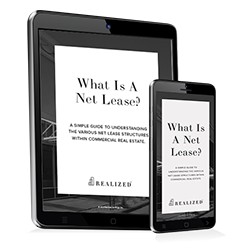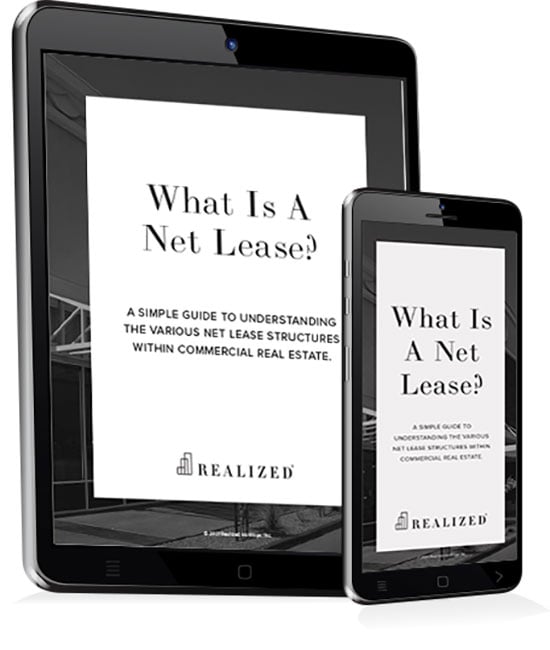
New real estate investors transitioning from property ownership to passive investments through net-leased properties should start by asking about the cap rate.
The capitalization rate, or cap rate, is one of the primary tools real estate investors use to evaluate properties. When considering net lease properties, including single-tenant retail and industrial and medical buildings, investors need to know how cap rates work because they determine property income potential, risk, and value. Cap rates are one of several metrics used in evaluating real estate investments, and do not guarantee income or risk levels.
Let's break it down.
What Is a Cap Rate?
The cap rate calculation uses the relationship between a property's annual net operating income (NOI) and its purchase price.
The formula for calculating cap rate is: Net Operating Income/Purchase Price.
For example: A net-leased property with $100,000 NOI and a $2,000,000 purchase price would have a 5.0% cap rate.
Higher cap rates may reflect greater potential income for your investment money, but they can also indicate additional risk levels. Real estate investments with low cap rates may have lower income returns, but they may come with lower risk levels and are typically located in attractive locations and/or have reliable tenants.
Cap Rates in Net Lease Properties
Net lease properties, specifically those with triple-net (NNN) leases, tend to exhibit distinct cap rate patterns compared to other real estate asset classes. Many real estate investors consider these assets income-driven investments with reduced risk because the tenant covers most expenses. This means the cap rates remain lower.
Here's a general overview:
|
Tenant Type |
Typical Cap Rate Range |
|
Investment-grade national tenant (e.g., Walgreens, FedEx) |
4.25% – 5.25% |
|
Franchise or regional operator |
5.50% – 6.50% |
|
Non-credit or private tenant |
6.75% – 8.00% + |
Cap rates are influenced by a range of factors, and no single variable determines valuation on its own. Key drivers include:
- Lease term (longer = lower cap rate)
- Location (core markets = lower cap rate)
- Industry sector (healthcare, retail, industrial)
- Tenant credit rating
- Rent Escalation Clauses
- Property Condition and Age
- Interest Rate Environment
- Asset Liquidity and Exit Market
Why Cap Rates Matter to 1031 Exchange Investors
As a 1031 Exchange investor considering a net-leased Delaware Statutory Trust (DST), understanding the cap rate can be a helpful part of the decision-making process.. This key metric helps investors:
- Evaluate Projected Cash Flow: Higher cap rates generally indicate higher potential income.
- Assess Risk Factors: The tenant’s creditworthiness, lease structure, and market conditions all influence risk.
- Make Informed Investment Decisions: Comparing cap rates across different DST and net lease opportunities can help investors choose the best fit for their financial goals.
For example, a $1 million investment in a DST property with a 5.0% cap rate would correspond to a projected $50,000 in annual gross income, providing passive, management-free returns. However, actual results depend on property performance, lease compliance, and market factors, and income is not guaranteed.
How Realized® Can Help
Realized serves property owners through our Investment Property Wealth Management approach, designed to assist investors in exploring options for transitioning actively managed real estate into passive ownership structures.. Our team delivers personalized insights to help you analyze DST cap rates alongside tenant risk assessments and DST selection.
We work with clients and their professional advisors to explore net lease DST portfolios that may align with their investment goals, income preferences, and risk tolerance, while considering the potential benefits of tax deferral under a 1031 Exchange as part of a broader financial or estate planning strategy.
Are you interested in knowing the influence of cap rates on your income levels and investment returns?
We will examine your available choices together to create a plan that focuses on the critical numbers that concern you.
The tax and estate planning information offered by the advisor is general in nature. It is provided for informational purposes only and should not be construed as legal or tax advice. Always consult an attorney or tax professional regarding your specific legal or tax situation.



